|
TennisOne Lessons Developmental Phrases: “Hit and Hold” - A Powerful-yet simple-phrase that Works! Dave Smith TennisOne Senior Editor It is widely agreed upon that Roger Federer is the complete player. He is dominate and confident, quiet and reserved, versatile and explosive.
Students and teachers of the game have studied Federer and found things he does differently—or simply better—than most of his contemporaries. Federer maintains better balance, fluid stroke execution, and a better visual focus on the ball longer than most. Can these three components in his game be related? Can students of the game learn, develop, and master these components too? Is there a clandestine protocol, a secret stratagem, that can somehow help everyone improve their game within such criterion? Without trying to sound like the proverbial medicine man selling magic elixirs from the back of a Volkswagen Square-back, I offer some proven and incredibly simple advice that can indeed help everyone play better tennis! (Not necessarily as good as Federer…but certainly better tennis within everyone’s potential!) It won’t grow hair on a bald man’s head, nor replace gasoline…but, I do know it can help tennis players play more effective tennis! Over the past 10 years or so, this phrase, “Hit and Hold” has become more and more valuable to me as an instructor, and more specifically, to my students who prescribe to the phrase and its implementation.
If you watch the pros play tennis, there is a subtle sense of balance and control that almost seems to create a perception of time in their favor. That is, they seem to seldom be rushed into hitting balls and they don’t seem to be overly anxious to recover. Yet, the speed of the game at their level is far superior to that which the mortal recreational tennis player will ever see. One would conclude that the pros have far less time to prepare and recover. Yet, when the club player competes, there is a sense of urgency in nearly every shot. Someone once said that tennis is a game of emergencies, a statement that would certainly sum up the games of many recreational, club, and even serious tournament players! However, at the pro level there is a sense of control and repetition that is far from the perpetual ‘state of emergency’ we commonly see on the public and private courts around the world! I think we can agree that strokes of the pros look powerful yet fluid; they have a repetitive nature about them that creates a feeling of ‘relaxed power’ when they hit several shots in sequence. The source of those ‘congruent swing patterns’ is a clear beginning and end to each shot. Almost every pro has a stroke that begins the same way and ends the same way when hitting the same shot. In fact, most pros hold their finish for a brief, but observable, moment. Hit and Hold is the phrase I have adopted to represent this observation. While there are many exceptions to this notion even among the pros, (namely when pros are actually pressed into one of those ‘emergency’ situations!), the phrase has tremendous influence in helping players develop better strokes, greater accuracy, and a sense of repetition in their own games.
What is Hit and Hold? As the phrase suggests, a player will want to hold their finish after they hit the ball. On volleys or groundstrokes, and even on serves and overheads, the sense of holding the stroke-finish for a moment serves as an ‘end’ to the stroke. As I will allude to this later, this ‘end’ to the stroke can offer much feedback in terms of aim, balance and repetitive control that is usually associated with skilled strokes. The idea is to hold your arm's and body’s position at the conclusion of a stroke, maintaining balance and establishing a finish point associated with each shot. The hit and hold finish can relate to the arm position, the feet position or both. When a player is not pressed into running for the next shot, a player can incorporate holding their arm and feet as they finish the shot. When having to retrieve a difficult shot, the arm can hold its position for a moment while the legs and feet are moving to recover or move through a shot as needed. While I don’t believe there is a panacea for all that ails a tennis player, this phrase indeed can address several incriminating features that plague many players. Balance When players know in advance they are going to ‘hold’ their finish, they tend to swing more ‘within themselves.’ That is, a player can’t overswing outside of their control if they know they will be holding their finish. For many, this is a major part of their tennis failure: they swing beyond their means creating a loss of control and a reduction of accuracy.
When players practice the art of ‘hit and hold’ they develop power from a balanced foundation. They learn to actually hit with more power because they have more control. Often, players who swing too hard lose so much control that the fear of missing reduces such power hitters to meek dinkers as matches progress! Likewise, players moving sideways, forward, or backwards must swing with balance if they hope to create control and consistency on those shots as well. By training yourself to hit and hold, you will indeed make those shots more reliable and effective. By hitting and holding your finish, you can improve the quality of your focus on the ball especially within the tracking and contact phase of the stroke. Roger Federer is relentless in his attempt to maintain his eyes on the ball through contact. He is almost revered in this aspect. Some say it is one of the main reasons he is so consistent and effective: he maintains his eyes on the contact zone longer than anyone. (Please read Alan Chandronnait’s excellent piece “The Eyes of a Champion” in the TennisOne Lesson Library for more information on this!) Aim and Evaluation
In my opinion, aiming is the one thing that we constantly strive to improve. It would be assumed that if we have reasonable swing mechanics we would not need to continuously address changes in our technique. (However, if our technique is suspect, aiming will usually be questionable no matter what!) By focusing on the hit and hold principle, we create a more measurable sense of aim. That is, when we hold our finish for a brief moment, we have that very moment to evaluate our aim. If the ball went low, we can register that within the swing memory and aim appropriately on our next stroke. If we have no defined finish, it is more difficult to define the stroke and aim because of the blur of continuous movement into the next shot Just like basketball players, golfers, and baseball players, all the good ones hold their finish. Granted, tennis players must quickly be ready to move to another shot almost immediately, but the principle is the same for all sports: holding the finish completes the motion and allows for evaluation of sequential aiming qualities. Stroke Evaluation Many recreational players taking lessons, or simply trying to make an educated change in their swing will, benefit greatly from the hit and hold principle. By holding the finish of a volley or groundstroke, players can immediately see whether their racquet or body position is in the right finish point. If the player simply swings and returns to a ready position without identifying such key points, they, many times, will develop bad habits or undesirable quirks in their stroke. A player working on his volley can see if the racquet face is changing during contact by holding the finish after the volley. They can check their feet as well as their body’s positioning. On groundstrokes, players notoriously over rotate or step through their shot too early. By holding the finish, every player will be more balanced and learn to let the racquet accelerate without they themselves trying to swing too much with the body. Unlike recreational players, watch the pros and you will see a very quiet body through contact to most of the follow-through, in addition to a sense of balance during and after the shot. This balance is, in my opinion, the most prolific aspect to developing a repetitive and reliable swing pattern. Set and Hold On volleys, this sister-phrase of hit and hold, ‘set and hold,’ can teach players to volley with far more accuracy and effect. The idea is that to make a volley,it's best to ‘set’ the racquet face to the desired angle of trajectory the moment you move the racquet for the volley. To hit a right-handed forehand angle volley to the far left, establish the desired angle of the racquet very early and then wait for the ball. Wait with your hands that is, not with your feet! You will always want to move to the best possible position for each shot with your feet (as opposed to ‘reaching’ for the ball with your hand.)
As you make contact with the volley, the ‘hold’ principle will help keep you from over-hitting the volley. By ‘setting and holding,’ players can gain a feeling of the relationship of hitting the volley with fewer of these undesirable embellishments! Conclusion While making changes in your strokes, grips, and footwork patterns are usually difficult and frustrating, you can improve your game through a greater sense of balance and control using the concept of ‘hit and hold.’ If you focus on these phrases and consciously apply them (until you can unconsciously employ them!), you will quickly recognize their value and develop better habits in the process. Try and play an entire set where you consciously hold your finish for a count of one to two seconds on every hit. You will be amazed at how much time you actually have between shots and you will also notice the quality of your own shots. Granted, you will probably encounter a few balls you might not get to by consciously holding for a count of one or two seconds, but you will in time discover how to hold parts of your finish, (upper body and arms) while another part of your body (legs and feet) are moving for the next shot. Your comments are welcome. Let us know what you think about Dave Smith's article by emailing us here at TennisOne .
TENNIS MASTERYFinally. a resource that unlocks these mysteries: • Why do m • Why are making changes in one's game so frustratingly difficult? • What tennis teaching methods are disruptive or detrimental to player progression? Read David W. Smith's TENNIS MASTERY and learn not just how to avoid playing at mediocre levels, but how the best players in the world Master the sport of tennis! "With a depth of knowledge and fresh perspective, TENNIS MASTERY is set to become a manual for tennis instructors and a measure for tennis literature." Richard Wigley, Director, Kayenta Tennis Center , Ivins Utah . Take in David Smith's 30 plus years in the tennis teaching industry. This 335-page manual will provide for every level of player as well as support for all tennis-teaching professionals, a blueprint for reaching higher levels of tennis mastery. Order TENNIS MASTERY at tenniswarehouse.com , or go to tennismastery.net for exciting excerpts from the book and a host of tennis information! And check out David Smith's other articles found here at TennisONE.com David has taught over 3000 players including many top national and world ranked players. He can be reached at acrpres1@email.msn.com. |


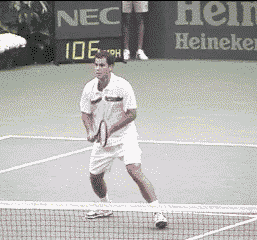
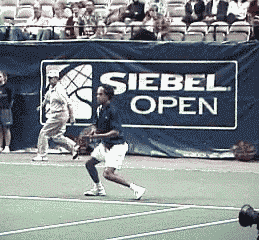
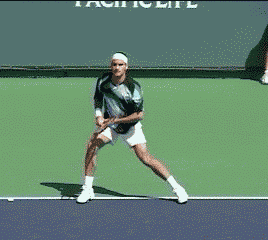
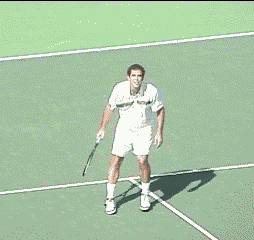
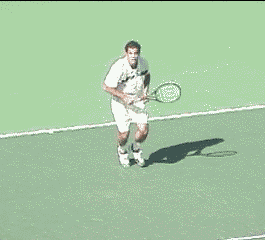
 illions of tennis players stagnate at levels far below their potential?
illions of tennis players stagnate at levels far below their potential?  Your comments are welcome. Let us know what you think about this article by
Your comments are welcome. Let us know what you think about this article by